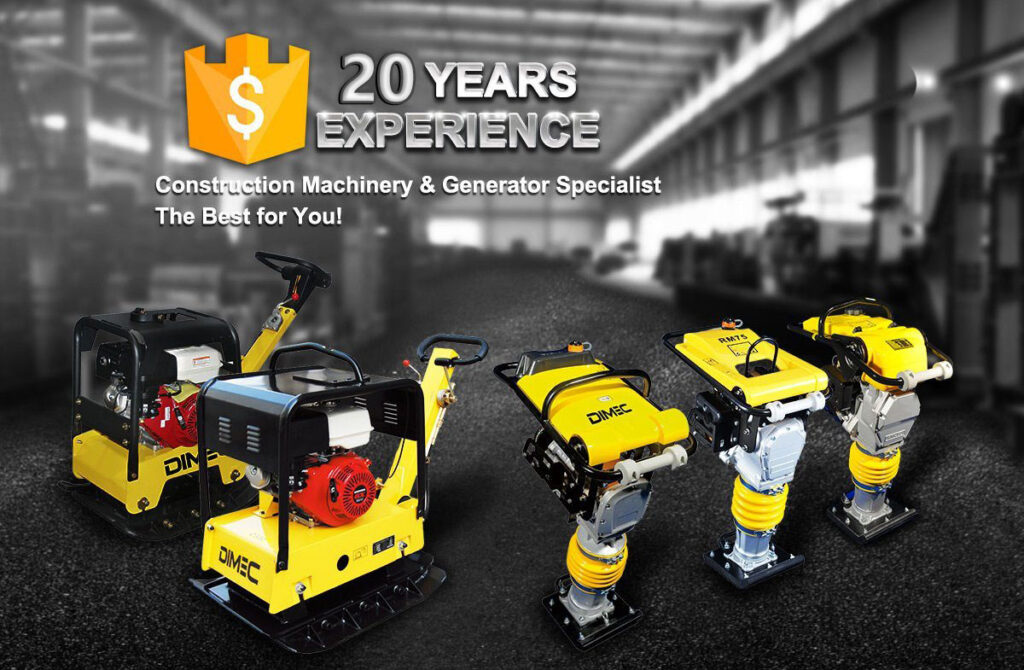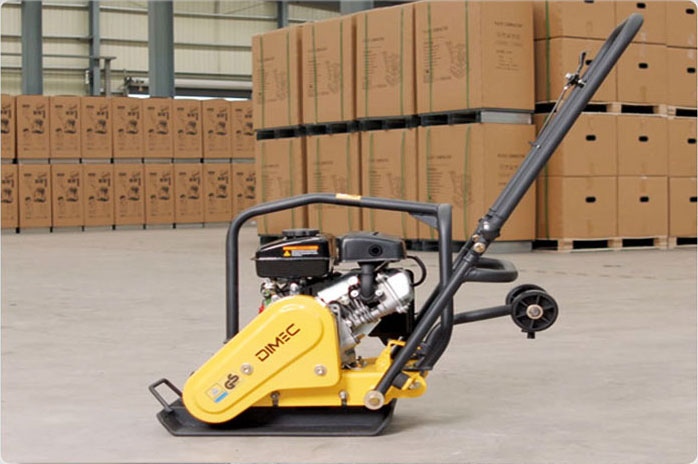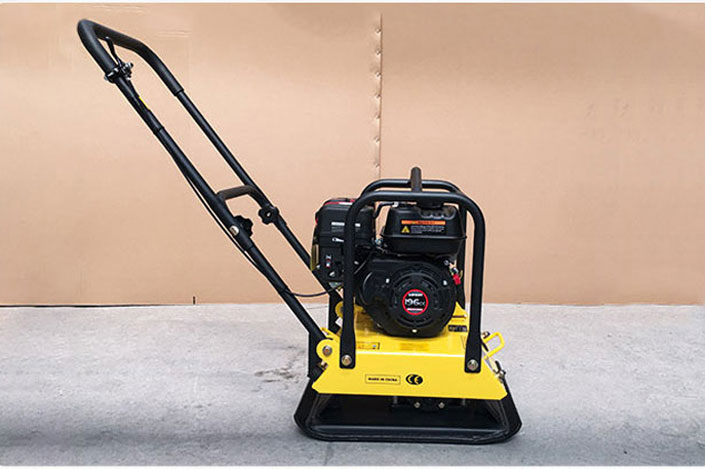Comparative Insight: Plate Compactor PME‑C50 vs. Vibratory Plate Compactor PME‑C90
Home » Comparative Insight: Plate Compactor PME‑C50 vs. Vibratory Plate Compactor PME‑C90

Table of Contents
Introduction
In the competitive realm of construction equipment, selecting the right compaction machine can significantly affect project outcomes. This article delves into a detailed comparison between the nimble PME‑C50 and the high-performance Vibratory Plate Compactor PME‑C90. By exploring their technical differences, operational strengths, and ideal applications, we aim to guide contractors and DIY professionals in making an informed decision.
Technical Specification
| Model | Plate Compactor PME-C50 |
|---|---|
| Engine | Loncin LC152F |
| Engine type | Air-cooled, single cylinder, 4-stroke, petrol engine / diesel engine |
| Frequency [VPM] | 5200 |
| Centrifugal force [KN] | 9 |
| Plate size (LxW) [cm] | 43x31 |
| Max.compaction depth[cm] | 20 |
| Travel speed [m/min] | 20 |
| Max.inclination angle | 20 |
| N.W./G.W. [kg] | 54/58 |
| Package (LxWxH) [cm] | 69x38x53 |
| Model | Vibratory Plate Compactor PME-C90 |
|---|---|
| Engine | Honda / Robin / Loncin / Diesel engine |
| Engine type | Air-cooled, single cylinder, 4-stroke, petrol engine / diesel engine |
| Frequency [VPM] | 4200 |
| Centrifugal force [KN] | 16 |
| Plate size (LxW) [cm] | 55x45 |
| Max.compaction depth[cm] | 35 |
| Travel speed [m/min] | 25 |
| Max.inclination angle | 20° |
| N.W./G.W. [kg] | 89/95 |
| Package (LxWxH) [cm] | 66x48x67 |
Technical Specifications and Design
PME‑C50 Overview:
- Compact and Versatile: Designed for tight workspaces, the PME‑C50 features a robust, cast-iron base plate engineered for precision compaction.
- Engine & Operation: Powered by a 2.5 HP engine with both petrol and diesel options, it delivers steady force ideal for moderate projects.
- Key Attributes: Lightweight design, low-vibration mechanism, and user-friendly controls make it perfect for residential and small-scale commercial tasks.
Vibratory Plate Compactor PME‑C90 Overview:
- Enhanced Performance: The PME‑C90 takes compaction to the next level with an advanced vibratory mechanism that delivers increased force and uniformity.
- Engine & Efficiency: Featuring a more powerful engine (around 5.5 HP), this machine is built to handle tougher soil conditions and larger surfaces with greater efficiency.
- Distinct Features: Its optimized vibratory system ensures deeper compaction and improved stability, making it suitable for high-traffic roadworks and extensive paving projects.
Performance and Application Comparison
Operational Dynamics:
The PME‑C50 excels in projects where maneuverability and precision are paramount. Its moderate vibration frequency and compact design allow for detailed work in confined areas. In contrast, the PME‑C90 is designed for larger, more demanding projects. Its higher vibration amplitude and increased engine power enable rapid coverage of large surfaces while achieving a uniform, deep compaction.Ideal Use Cases:
- PME‑C50: Best suited for residential driveways, garden paths, and small-scale commercial projects where controlled compaction is essential.
- PME‑C90: Recommended for extensive road construction, commercial paving, and industrial applications that demand high-performance compaction over broader areas.
Ergonomics, Maintenance, and ROI
Both models are engineered with operator comfort in mind.
- The PME‑C50’s ergonomic design and low-vibration system reduce fatigue during prolonged operation, making it an excellent choice for precision tasks in smaller settings.
- The PME‑C90, while more robust, incorporates advanced shock absorption and intuitive controls that ensure steady performance even during heavy-duty operations.
Regular maintenance routines are simple yet critical, ensuring longevity and reducing downtime. The higher productivity of the PME‑C90 can translate into faster project completion and improved return on investment for large-scale applications.
Conclusion
Choosing between the PME‑C50 and the Vibratory Plate Compactor PME‑C90 ultimately depends on your project’s scale and specific requirements. For tasks demanding precision in confined spaces, the PME‑C50 offers unmatched versatility. However, for high-volume projects requiring deeper, more uniform compaction, the PME‑C90 stands out as the superior option. Both machines represent excellent investments tailored to different segments of the compaction market.
FAQs
What distinguishes the PME‑C50 from the PME‑C90?
The PME‑C50 is built for precision in compact environments, whereas the PME‑C90 is engineered for heavy-duty tasks with enhanced vibratory power and coverage.Which model is ideal for road construction?
The PME‑C90, with its powerful engine and higher compaction force, is best suited for large-scale roadworks and commercial paving projects.How do maintenance needs compare?
Both models require routine maintenance; however, the robust design of the PME‑C90 is optimized for continuous heavy-duty use, which may demand slightly more attention under intense operational conditions.
Plate Compactor X Tamping Rammer X Road Roller
You May Also Like
Plate Compactor PME-C50 vs Soil Compactor PME-C80T: Which One Suits Your Project Best?
Vibration Tamper Power Guide: 21 Key Insights for Smart Buyers
Brick Saw Buying Guide + Expert Tips + Top 10 Models
Container Loading
Essential Tips for Gasoline Engine Maintenance for Optimal Performance + Expert Guide + 17 Key Insights
Are Diesel Generators More Reliable Than Gasoline Generators?
Preferred Brands of Engineering Compaction Equipment
Three Core Product Lines for Efficient Construction

Full Range of Plate Compactor Solutions (40KG - 750KG)
We offer 8 plate compactors for light to heavy - duty work. Modular design suits various scenarios, and patented shock - absorption boosts comfort by 30%.

High - efficiency Tamping Rammer Series (32KG - 90KG)
Nine impact rammers with Honda/Robin/Loncin power. Advantages: 15% less energy use, 2x longer - lasting alloy head, 50% less fatigue. Ideal for complex jobs like trench backfilling.

Intelligent Road Roller Machinery Cluster (0.3T - 5.5T)
A 12 - model all - terrain matrix. Features multi - gear amplitude, foldable cockpit (40% better passability in narrow areas), and real - time compaction monitoring. Caters to all road - building stages.

